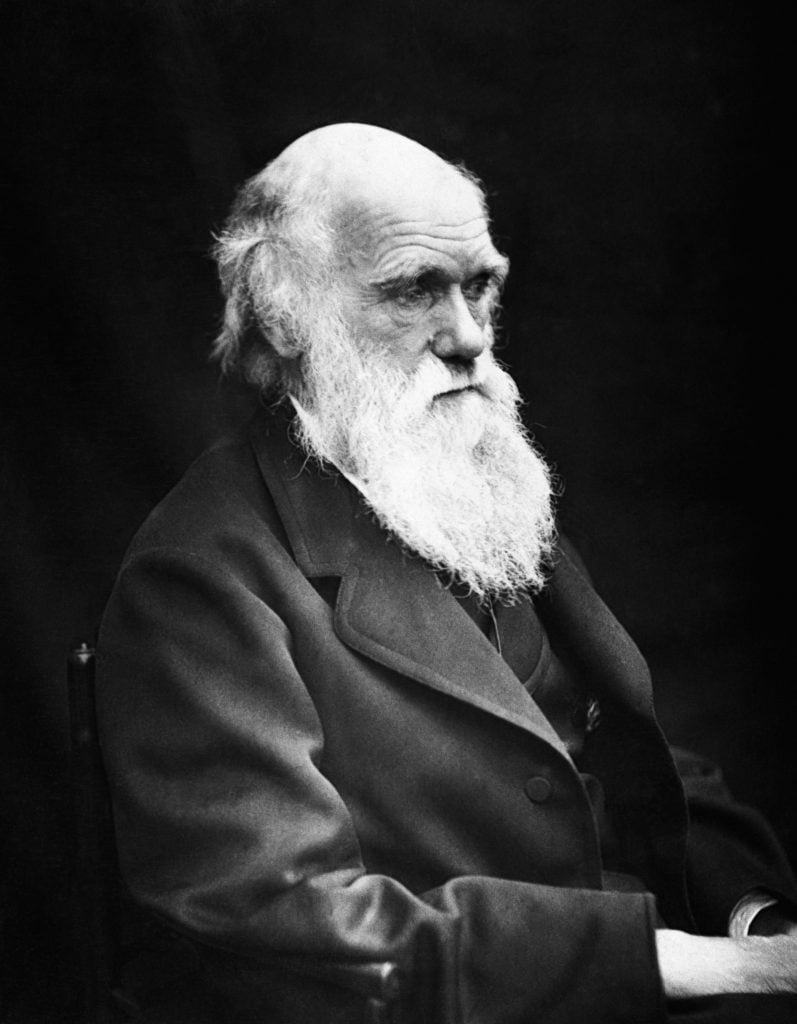Art World
Charles Darwin’s Personal Library of 13,000 Books Revealed for the First Time
The 300-page catalogue, published by Darwin Online, lists volumes spanning subjects from art to zoology.

The 300-page catalogue, published by Darwin Online, lists volumes spanning subjects from art to zoology.

Sofia Hallström

In The Expression of the Emotions in Men and Animals, Charles Darwin noted his disappointment in artists, writing: “I had hoped to derive much aid from the great masters in painting and sculpture, who are such close observers. Accordingly I have looked at photographs and engravings of many well-known works; but, with a few exceptions, have not thus profited.”
Based on the tomes in his extensive trove of books, however, we can see that Darwin had at least some appreciation of art. The personal library belonging to the English naturalist, geologist, and biologist, widely known for his contributions to evolutionary biology, has been fully documented for the first time to coincide with his 215th birthday this February. The 300-page catalogue, published by Darwin Online, lists nearly 7,400 titles across 13,000 volumes spanning subjects like biology, geology, philosophy, history, travel, and even art. Close to 9,500 of these works have been copied and made accessible for curious readers to peruse in the digital anthology.
Some of the books date back to Darwin’s school days such as Oliver Goldsmith’s A History of England (1821). Researchers have also used auction records to determine what else was in the collection. For example, an auction sales record reveals that Darwin had a copy of an 1826 article by the ornithologist John James Audubon, titled “Account of the habits of the Turkey Buzzard (Vultura aura), particularly with the view of exploding the opinion generally entertained of its extraordinary power of smelling.”
Also among the diverse array of books in Darwin’s library are notable works such as the 1793 History of Quadrupeds by Thomas Pennant, which features a comprehensive index of animals with illustrations by various artists. Also present is John Playfair’s 1802 Illustrations of the Huttonian Theory of the Earth, offering insights into geological theories of the time.
Additionally, an 1863 publication titled The Varieties of Dogs, as They are Found in Old Sculptures, Pictures, Engravings, and Books highlights Darwin’s interest in the diversity of life forms. Another is the 1872 coffee table book Sun Pictures: A series of twenty heliotype illustrations of ancient and modern art.
Previous lists of what was in Darwin’s library only covered around 15 percent of what was actually in it, said John van Wyhe, the academic who led the project, which has taken nearly 20 years to complete.
“The size and range of works in the library makes manifest the extraordinary extent of Darwin’s research into the work of others,” Van Whye told the Guardian, adding that the scientist was “not an isolated figure working alone but an expert of his time building on the sophisticated science and studies and other knowledge of thousands of people.”